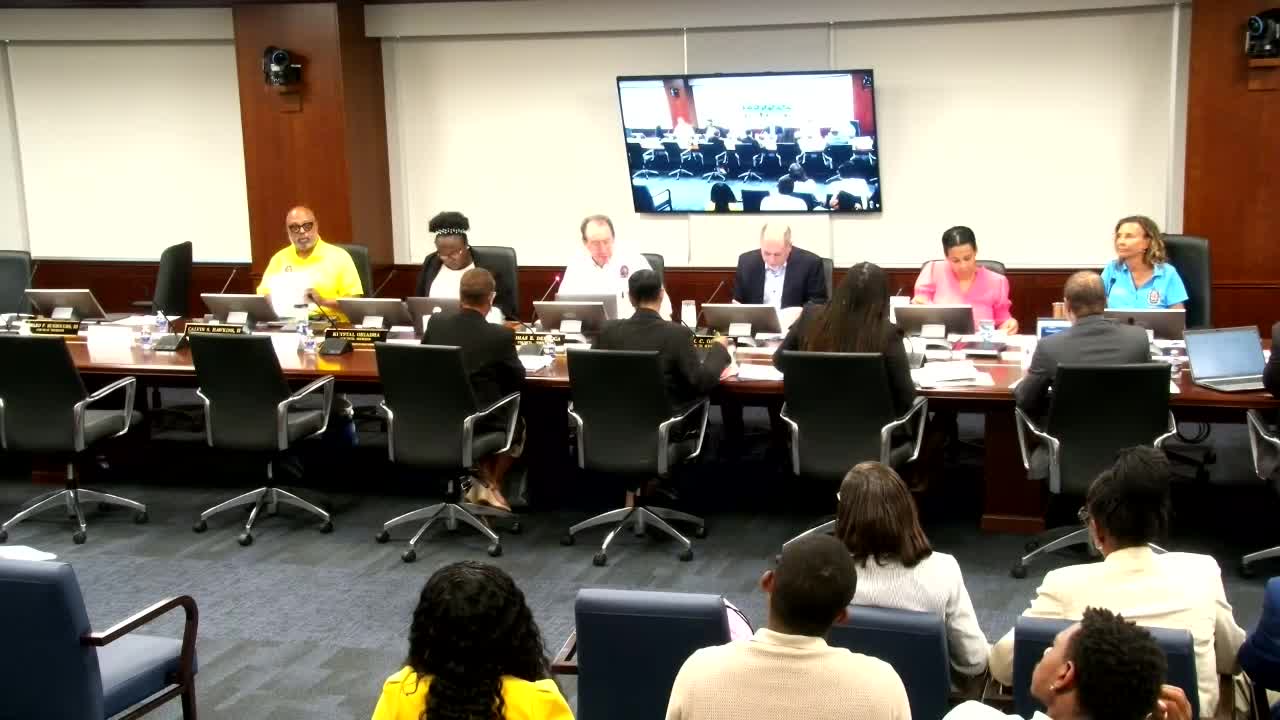Legislators review ordinance for new opioid treatment centers in local zoning laws
July 03, 2025 | Prince George's County, Maryland
This article was created by AI summarizing key points discussed. AI makes mistakes, so for full details and context, please refer to the video of the full meeting. Please report any errors so we can fix them. Report an error »

The Prince George Planning, Housing and Economic Development Committee convened on July 3, 2025, to discuss several key agenda items, primarily focusing on the proposed ordinance CB 27-20-25 concerning opioid treatment services.
The meeting began with a presentation by Miss Hightower regarding the ordinance, which aims to establish regulations for opioid treatment centers as a new principal use type. The proposal includes defining the zones where these centers can operate and setting conditions for their approval, including off-street parking requirements. The most recent draft of the ordinance, referred to as draft 2A, was made available for review, with specific pages in the virtual binder highlighted for committee members.
Mister Irvin was invited to address proposed amendments to draft 2A, while Miss Hernandez provided a memo confirming the bill's legislative form. The planning board had previously voted to take no position on an earlier draft of the bill, and their technical staff report was also included in the binder for reference. Notably, there were no public comments received regarding draft 2A.
A point of confusion arose during the meeting regarding the maps of potential sites for the treatment centers. Committee members clarified that the maps presented were not related to draft 2A but were instead for a different proposal, CB 42. The correct maps for draft 2A were confirmed to be included in the binder.
The discussion highlighted the intent behind the ordinance, which is to facilitate the establishment of opioid treatment centers without the need for a special exception, a process that has proven cumbersome for providers due to state medical licensing regulations. The committee noted that the current laws in Prince George are among the most restrictive in the state, prompting a review of regulations from other jurisdictions, such as Anne Arundel and Baltimore County, to inform their approach.
As the meeting progressed, committee members expressed the need for further examination of the proposed locations and regulations to ensure they align with community needs and state guidelines. The committee plans to continue discussions on this ordinance in future meetings, emphasizing the importance of addressing the opioid crisis effectively while balancing community concerns.
The meeting began with a presentation by Miss Hightower regarding the ordinance, which aims to establish regulations for opioid treatment centers as a new principal use type. The proposal includes defining the zones where these centers can operate and setting conditions for their approval, including off-street parking requirements. The most recent draft of the ordinance, referred to as draft 2A, was made available for review, with specific pages in the virtual binder highlighted for committee members.
Mister Irvin was invited to address proposed amendments to draft 2A, while Miss Hernandez provided a memo confirming the bill's legislative form. The planning board had previously voted to take no position on an earlier draft of the bill, and their technical staff report was also included in the binder for reference. Notably, there were no public comments received regarding draft 2A.
A point of confusion arose during the meeting regarding the maps of potential sites for the treatment centers. Committee members clarified that the maps presented were not related to draft 2A but were instead for a different proposal, CB 42. The correct maps for draft 2A were confirmed to be included in the binder.
The discussion highlighted the intent behind the ordinance, which is to facilitate the establishment of opioid treatment centers without the need for a special exception, a process that has proven cumbersome for providers due to state medical licensing regulations. The committee noted that the current laws in Prince George are among the most restrictive in the state, prompting a review of regulations from other jurisdictions, such as Anne Arundel and Baltimore County, to inform their approach.
As the meeting progressed, committee members expressed the need for further examination of the proposed locations and regulations to ensure they align with community needs and state guidelines. The committee plans to continue discussions on this ordinance in future meetings, emphasizing the importance of addressing the opioid crisis effectively while balancing community concerns.
View full meeting
This article is based on a recent meeting—watch the full video and explore the complete transcript for deeper insights into the discussion.
View full meeting
